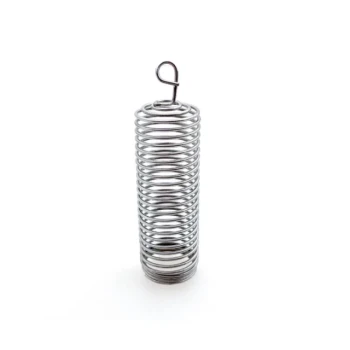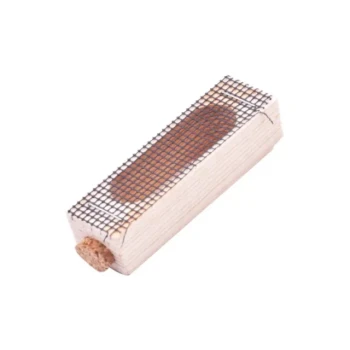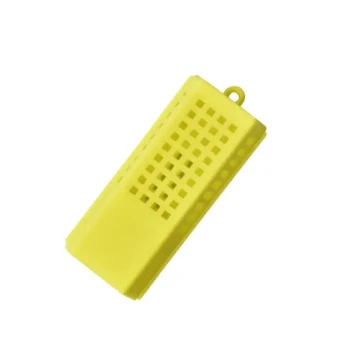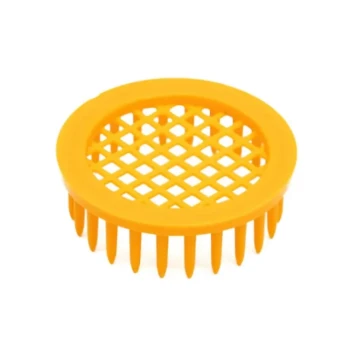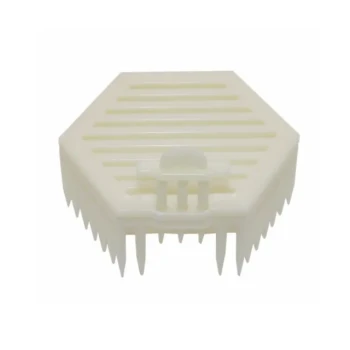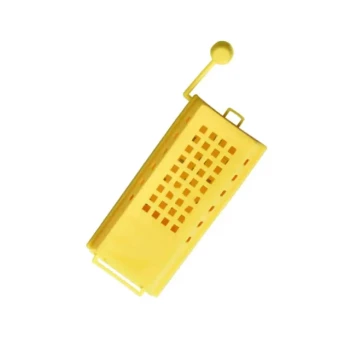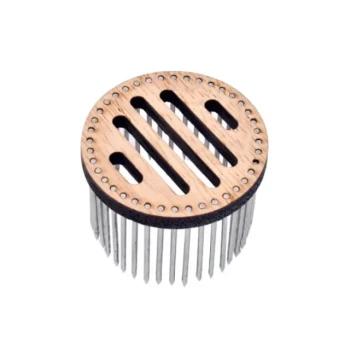When honey bees do not recognize a queen, they perceive her as a dangerous intruder and initiate a lethal defensive behavior known as "balling." Worker bees will form a tight, aggressive cluster around the queen (or her introduction cage), vibrating their wing muscles to generate intense heat and effectively cook her to death. This is the colony's ultimate act of rejection.
Queen rejection is not random aggression but a predictable, pheromone-driven defense mechanism. A colony's acceptance or rejection of a new queen hinges entirely on whether they perceive her chemical signature as "self" or "other."
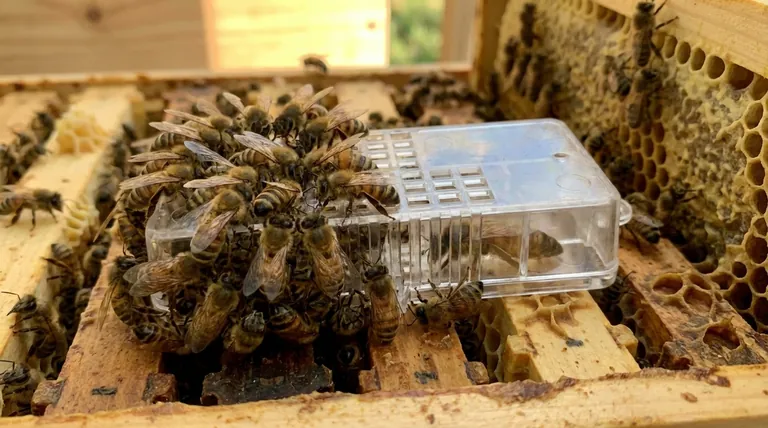
The Anatomy of Queen Rejection
A honey bee colony functions as a single superorganism, unified by a complex language of chemical signals called pheromones. The queen is the primary source of these signals, and her unique scent signature lets every bee know the colony is healthy and "queenright."
The Pheromonal Trigger
The core reason for rejection is a pheromone mismatch. The new queen has a different scent profile from the colony's previous queen.
Worker bees are genetically programmed to eliminate any foreign queen to protect their own colony's lineage. Until the new queen's scent has permeated the hive and been accepted, she is considered a mortal threat.
What "Balling" Looks Like
Balling is an unmistakable sign of aggression. You will see a tight ball of worker bees completely encasing the queen or her cage.
The bees are not simply observing her; they are actively trying to kill her by stinging, biting the cage, and, most effectively, raising their body temperature to lethal levels. The buzzing from a queen ball is often loud and agitated.
Acceptance vs. Rejection
The difference in hive behavior is stark. Accepted queens will have bees calmly walking on her cage, and some workers may even be seen attempting to feed her through the mesh.
Rejected queens will be met with the aggressive, tight ball of bees described above. This is a clear signal that the colony is not ready and she should not be released.
Common Causes for Queen Rejection
Understanding why a colony rejects a new queen is the key to preventing it. The issue almost always stems from the hive's internal state.
The Old Queen's Lingering Scent
If a colony was queenright very recently, the old queen's pheromones are still strong throughout the hive. The bees will not accept a new chemical signature while the old one is still present. This is why a waiting period is crucial.
A Hidden Competing Queen
The colony may already have a queen you are unaware of. This could be a small, unmated virgin queen that is difficult to spot, or the hive may have raised its own emergency queen cell. A colony will never accept a new queen if they believe they already have one.
The Presence of Laying Workers
In a colony that has been queenless for an extended period, some worker bees may begin to lay unfertilized (drone) eggs. These laying workers see a new queen as a direct threat to their own reproductive status and will lead the effort to kill her.
General Colony Stress
A stressed or agitated colony is far more likely to be defensive and reject a new queen. Stressors can include a recent hive inspection, pest pressure (like Varroa mites), or a lack of available food (nectar dearth).
Best Practices for a Successful Introduction
Your goal is not just to place a queen in a box, but to manage the social dynamics of the hive to ensure she is welcomed.
Ensure the Colony is Truly Queenless
This is the most critical first step. Before introducing a new queen, you must be certain the old one is gone. Many beekeepers wait at least 24 hours after removing the old queen to allow the colony to recognize its queenless state.
Use the Slow-Release Method
New queens are typically shipped in a small cage with a "candy plug" blocking one exit. This is by design.
Placing this cage in the hive allows the queen to be protected while her pheromones slowly spread. The worker bees will gradually eat through the candy plug over several days, giving them time to acclimate to her scent before she is released among them.
Minimize Hive Disturbances
Once you place the queen cage in the hive, leave it alone. Resista the urge to check on her progress every day.
Each time you open the hive, you create stress and disruption, increasing the chances of rejection. Wait 5-7 days before performing a quiet, minimal inspection to confirm she has been released and is laying eggs.
Making the Right Choice for Your Hive
Your approach to requeening should be adapted to the specific state of your colony.
- If your primary focus is requeening a calm, established hive: Adhere strictly to the slow-release method and prioritize minimizing disturbances for a very high chance of success.
- If your primary focus is managing an aggressive or weak colony: Your first job is to solve the underlying problem (e.g., mites, temperament genetics) before you introduce a new queen.
- If your primary focus is saving a long-term queenless hive: You must first confirm you do not have laying workers, as they will reject any new queen you introduce.
Understanding queen acceptance transforms it from a gamble into a calculated process, ensuring the long-term health and stability of your colony.
Summary Table:
| Situation | Hive Behavior | Key Indicator |
|---|---|---|
| Queen is Accepted | Calm, curious workers | Bees feeding the queen through the cage mesh |
| Queen is Rejected | Aggressive, tight cluster | Loud buzzing ball of bees trying to kill the queen |
| Common Causes | Pheromone Mismatch, Lingering Scent of Old Queen, Hidden Virgin Queen, Laying Workers, Colony Stress |
Ensure a Smooth Requeening Process for Your Apiary
Don't let queen rejection set back your honey production or colony health. HONESTBEE supplies commercial apiaries and beekeeping equipment distributors with the high-quality, reliable supplies needed for successful hive management.
From durable queen introduction cages to essential beekeeping tools, our wholesale-focused operations ensure you have what you need, when you need it.
Let's strengthen your hives together. Contact our expert team today to discuss your apiary's needs.
Visual Guide
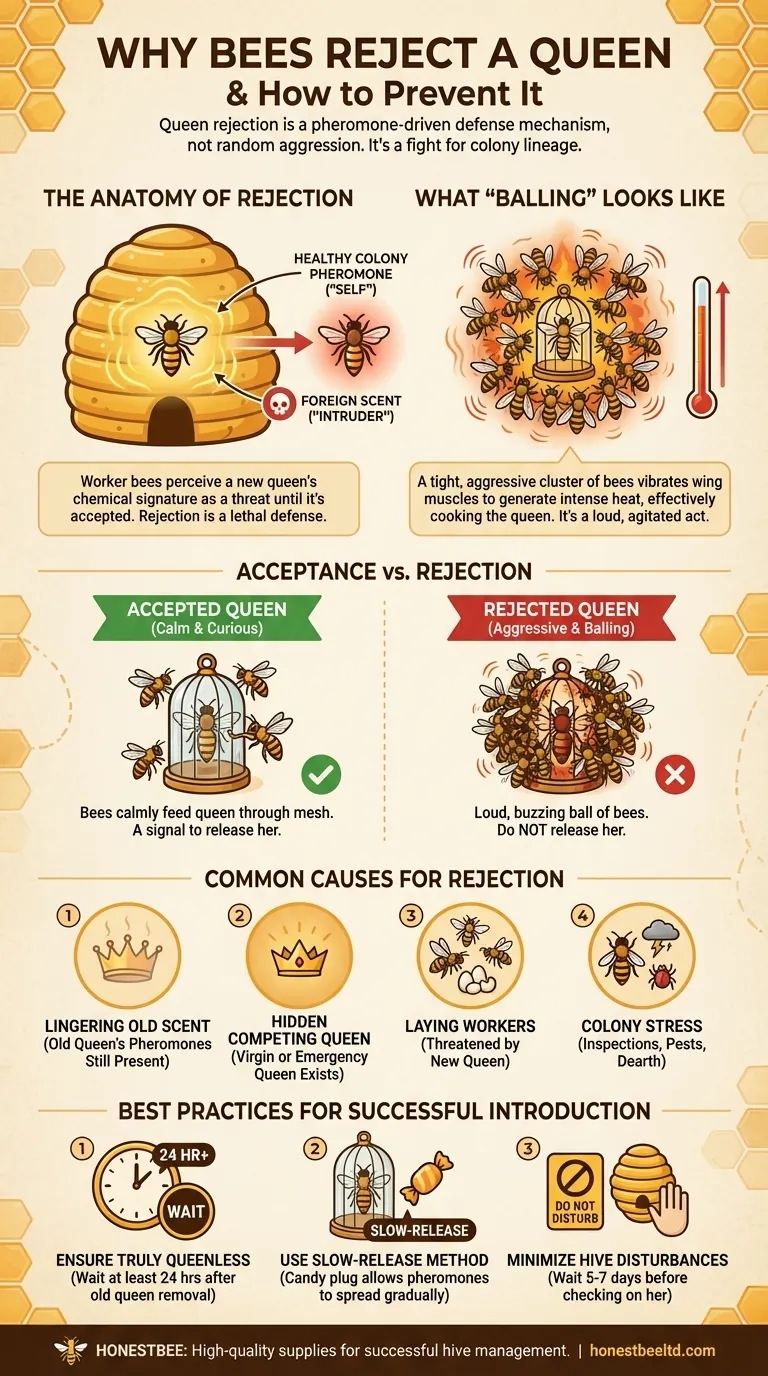
Related Products
- Professional Multi-Functional Queen Bee Cage
- Multi-Function Queen Roller Cage and Catcher
- Wood and Mesh Push-In Queen Cage
- Durable Galvanized Steel Spring Queen Bee Cage
- Professional Round Push-In Queen Cage with Metal Tines
People Also Ask
- What items are needed to place the queen bee's cage in the hive? A Guide to Successful Queen Introduction
- Why might bees reject a new queen? A Guide to Successful Queen Introduction
- How long does it typically take bees to adjust to a new queen? Master the 2-7 Day Acceptance Window
- How should a queen cage be maintained over time? Ensure Queen Introduction Success
- What are the components of a standard queen cage? A Guide to Safe Queen Introduction



